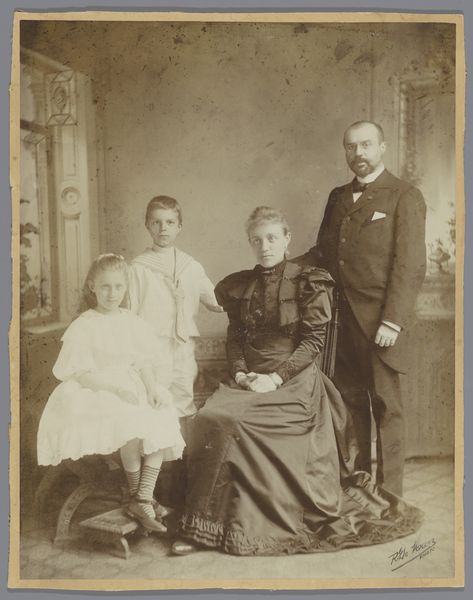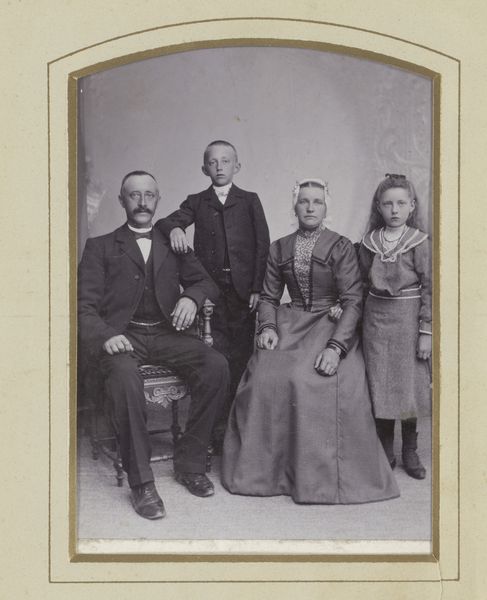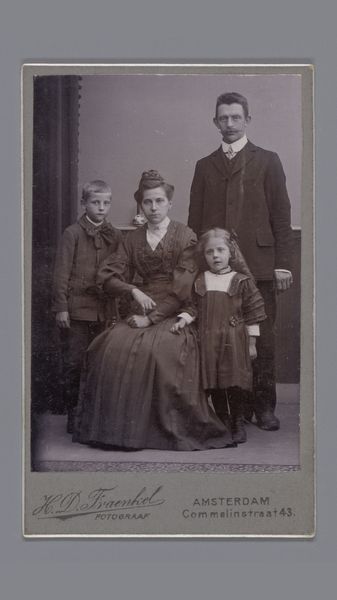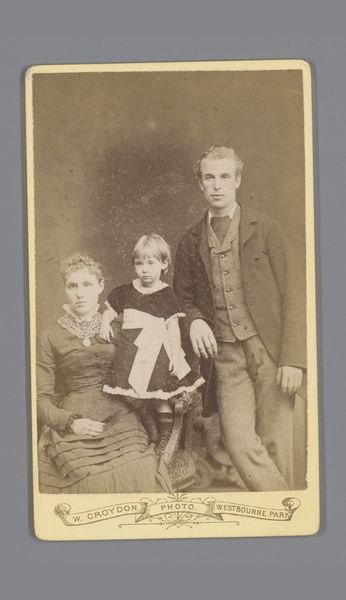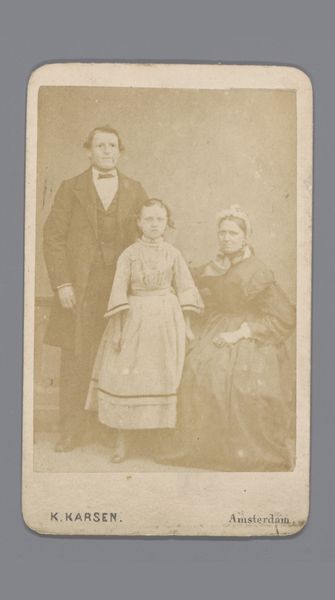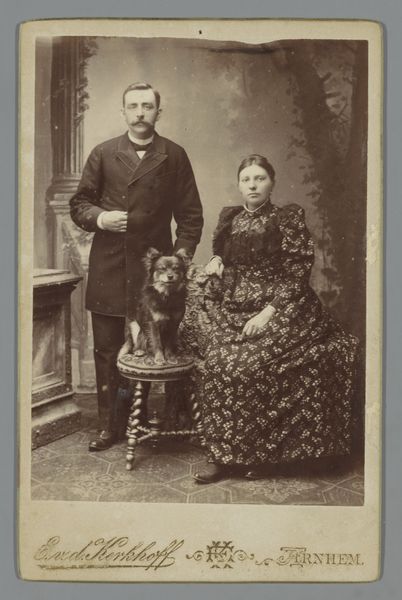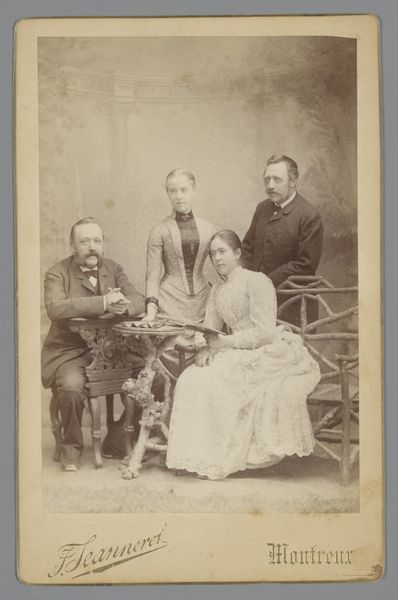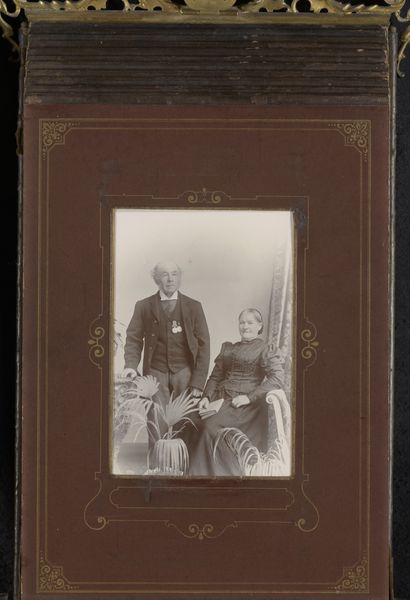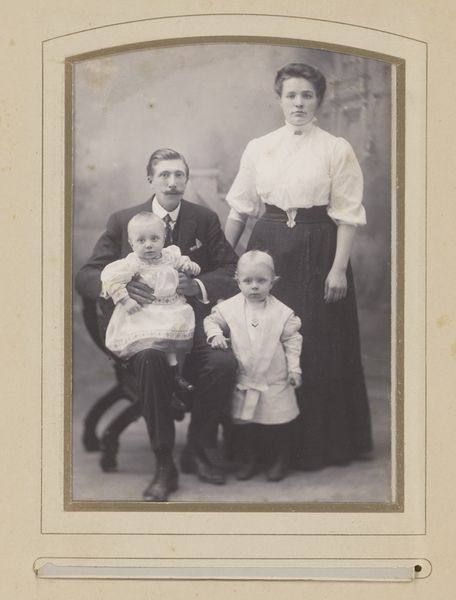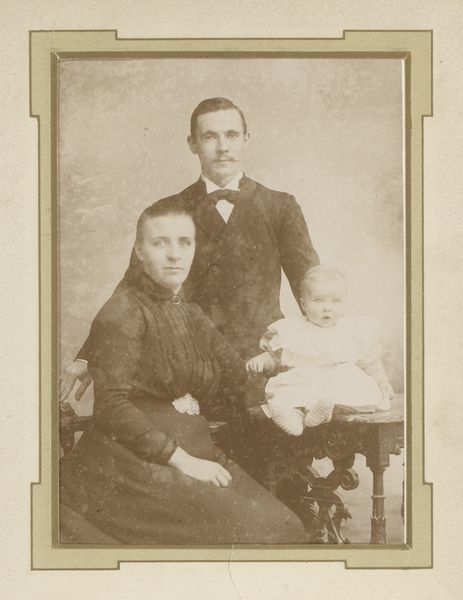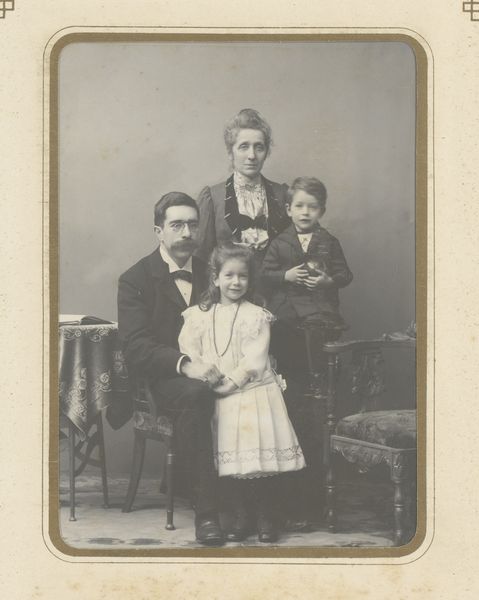
photography, gelatin-silver-print
#
portrait
#
16_19th-century
#
dog
#
photography
#
historical photography
#
gelatin-silver-print
#
19th century
#
academic-art
#
poster
Dimensions: height 141 mm, width 96 mm
Copyright: Rijks Museum: Open Domain
Curator: Looking at this rather stiff studio portrait, taken sometime between 1880 and 1912, the title given is "Portrait of Three Women and a Man with Dog." It's a gelatin-silver print, attributed to Johannes G.H. Beelenkamp. Editor: Stiff is right! There’s something haunting about these old photographs. The figures are so still, the sepia tones make it look ancient and fragile and very...controlled. I’m drawn to the dog. Its material presence seems to be the only real element. Curator: The very act of commissioning and creating such portraits speaks to a certain class and social aspiration of the time. The carefully arranged composition, the clothing, the background – everything points to an attempt at projecting an image of respectability and perhaps even prosperity. It follows specific visual conventions for the aspiring middle class. Editor: Conventions yes. But let’s consider the labor behind the gelatin-silver print. Coating, exposing, developing, all require skills and specific chemistry. What did it mean for photographic studios to appear, becoming a place of industry where posing and capturing the likeness become something of commodity? The tonal range here, with the almost glowing white dresses, versus the gentleman's suit -- is intriguing, playing to the properties of the gelatin silver. Curator: The choice of gelatin-silver as a process, making mass production affordable also allowed for a much wider social representation than previous forms of portraiture. That shift reflects changes in societal power structures, wouldn’t you agree? Photography was becoming a democratic tool, available, in various gradations, across social classes. Editor: To an extent, yes. Yet even with greater access, these studio portraits enforced norms and social mores. The subjects, stiff and formally dressed, demonstrate this tension. They bought into the process but remained constrained within its performative nature. They want to be seen! But they also feel awkward. Note how even the studio backdrop, designed to convey elegance, looks manufactured, mass-produced. The production wants to emulate aristocracy through photographic materiality. Curator: I think we're in agreement regarding that sense of constrained display! Consider that the performativity existed even in how studios operated. There was a deliberate set of expectations on what a portrait "should" look like for a client of that period, contributing to the art's politics. It’s a social transaction, recorded with chemical processes. Editor: Exactly. Thinking about photography as a constructed commodity provides unique social-historical insights! Curator: And with that, it provides insights into production of its material that is also key for understanding photography’s broad history!
Comments
No comments
Be the first to comment and join the conversation on the ultimate creative platform.
